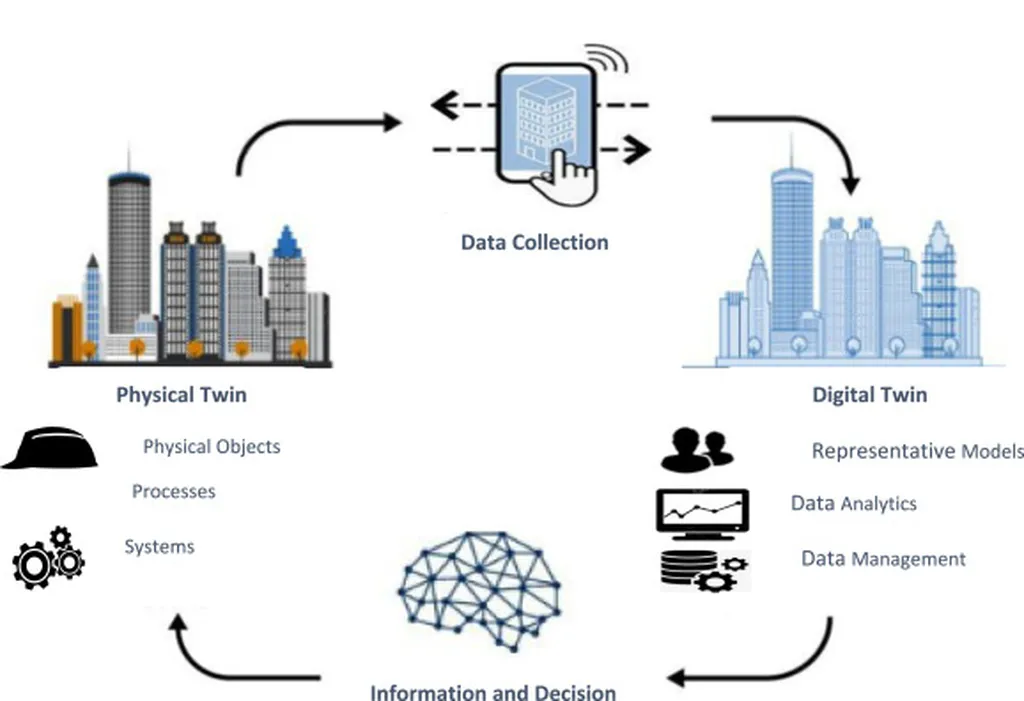In the rapidly evolving landscape of civil infrastructure, a groundbreaking technology is making waves, promising to revolutionize how we manage and maintain our built environment. Digital twins (DTs), virtual replicas of physical systems that are continuously updated with real-time data from IoT sensors and simulations, are emerging as a game-changer in the field of civil engineering. A recent study published in the *Journal of Civil Engineering and Management* (translated from Lithuanian as *Žurnalas “Civilinė Inžinerija ir Vadyba”*) sheds light on the transformative potential of DTs, offering a comprehensive review of their applications and the challenges that lie ahead.
The study, led by Hessam Kaveh from the Department of Computer Engineering at Istanbul Medipol University, explores how digital twins can enhance structural health monitoring (SHM), predictive maintenance, smart city frameworks, and disaster response systems. By providing a virtual representation of physical infrastructure, DTs enable real-time monitoring, optimized asset management, and enhanced decision-making. This technology, initially introduced in the manufacturing sector, is now being extended to civil engineering, with significant implications for the energy sector and beyond.
“Digital twins offer a significant potential for real-time monitoring, predictive maintenance, optimized asset management, and enhanced decision-making,” Kaveh explains. “They provide a virtual representation of physical systems, which are continuously updated with real-time data from IoT sensors and simulations. This allows for a more proactive and efficient approach to infrastructure management.”
The applications of digital twins in civil infrastructure are vast. For instance, in the energy sector, DTs can be used to monitor the health of critical infrastructure such as power plants, wind turbines, and transmission lines. By analyzing real-time data, DTs can predict potential failures, enabling preventive maintenance and reducing downtime. This not only improves the reliability of energy supply but also enhances safety and reduces costs.
Moreover, DTs can be integrated into smart city frameworks, enabling better urban planning and management. They can also play a crucial role in disaster response systems, providing real-time data and simulations to aid in decision-making during emergencies.
However, the widespread adoption of DTs in civil engineering faces several challenges. High implementation costs, data integration and interoperability issues, and cybersecurity risks are among the key barriers identified in the study. To overcome these challenges, the paper outlines the need for standardized data formats, enhanced AI-driven predictive models, and scalable cloud solutions.
“Despite the numerous advantages of DTs, several challenges impede their widespread adoption in civil engineering,” Kaveh notes. “These include high implementation costs due to the need for sophisticated sensors, high-performance computing, and advanced simulation tools. Additionally, data integration and interoperability issues between various data sources and platforms hinder seamless adoption.”
The study concludes by highlighting future research directions to address these challenges, emphasizing the need for collaboration across academia, industry, and government. With continued advancements in machine learning, edge computing, and secure data protocols, DTs are poised to revolutionize infrastructure management, contributing to smarter, safer, and more efficiently built environments.
As the energy sector continues to evolve, the integration of digital twins into infrastructure management practices could prove to be a significant step forward. By enabling real-time monitoring, predictive maintenance, and optimized asset management, DTs can help energy companies improve the reliability and efficiency of their operations, ultimately benefiting both the industry and the end-users.
In the words of Kaveh, “With continued advancements in machine learning, edge computing, and secure data protocols, DTs are poised to revolutionize infrastructure management, contributing to smarter, safer, and more efficiently built environments.” This research not only highlights the transformative potential of digital twins but also sets the stage for future developments in the field, making it a compelling read for professionals in the energy sector and beyond.

